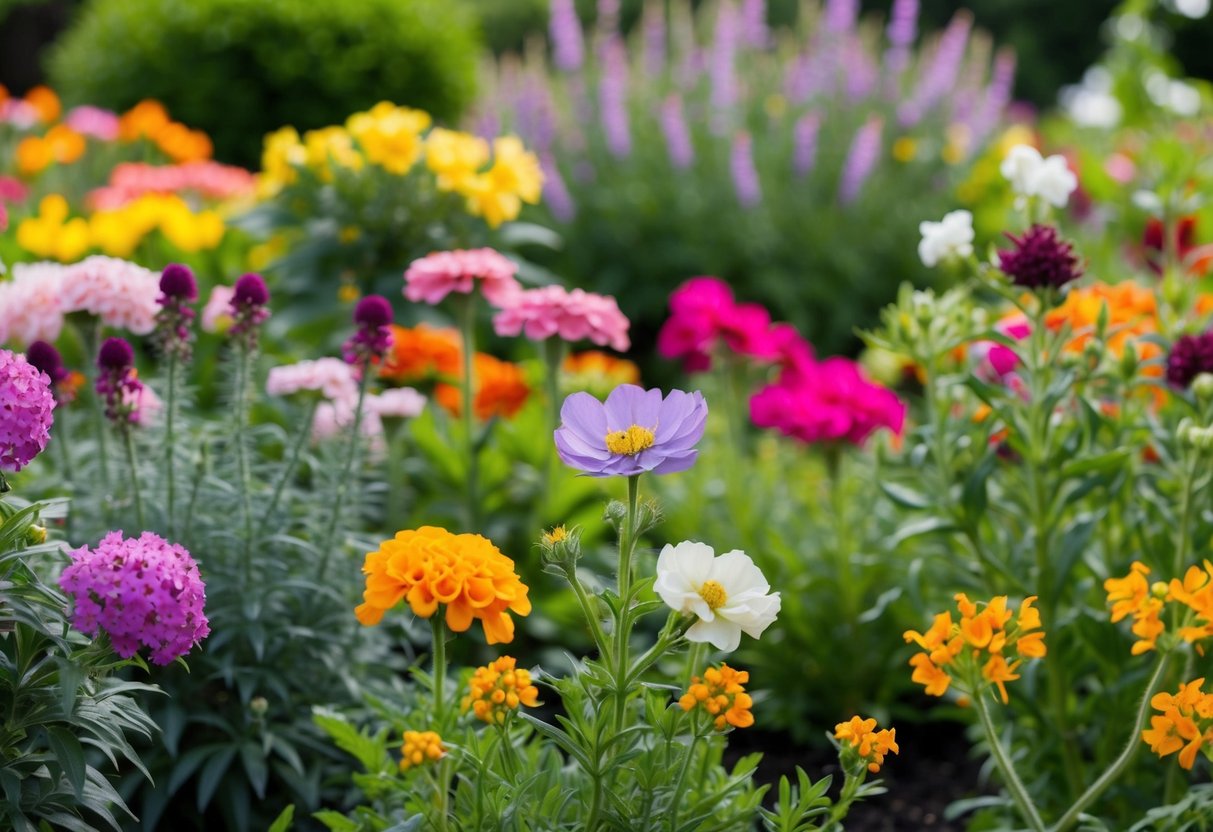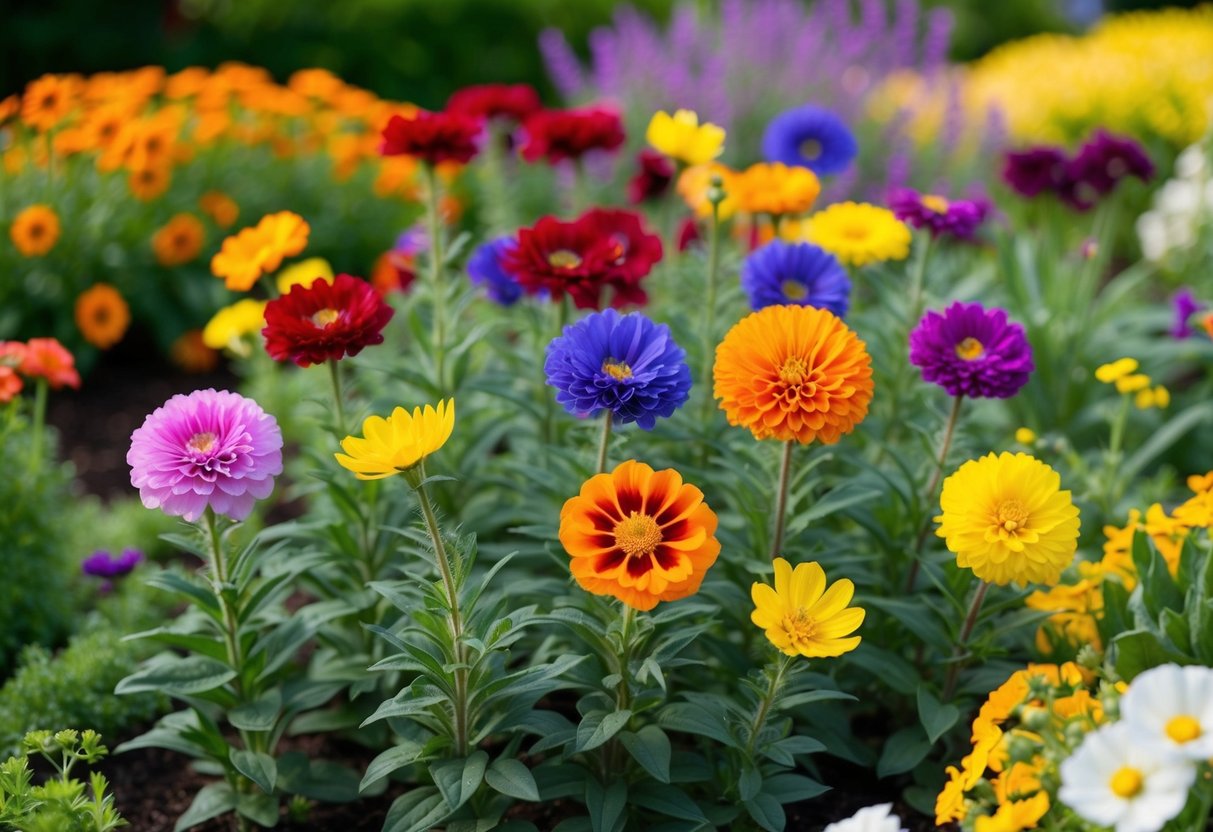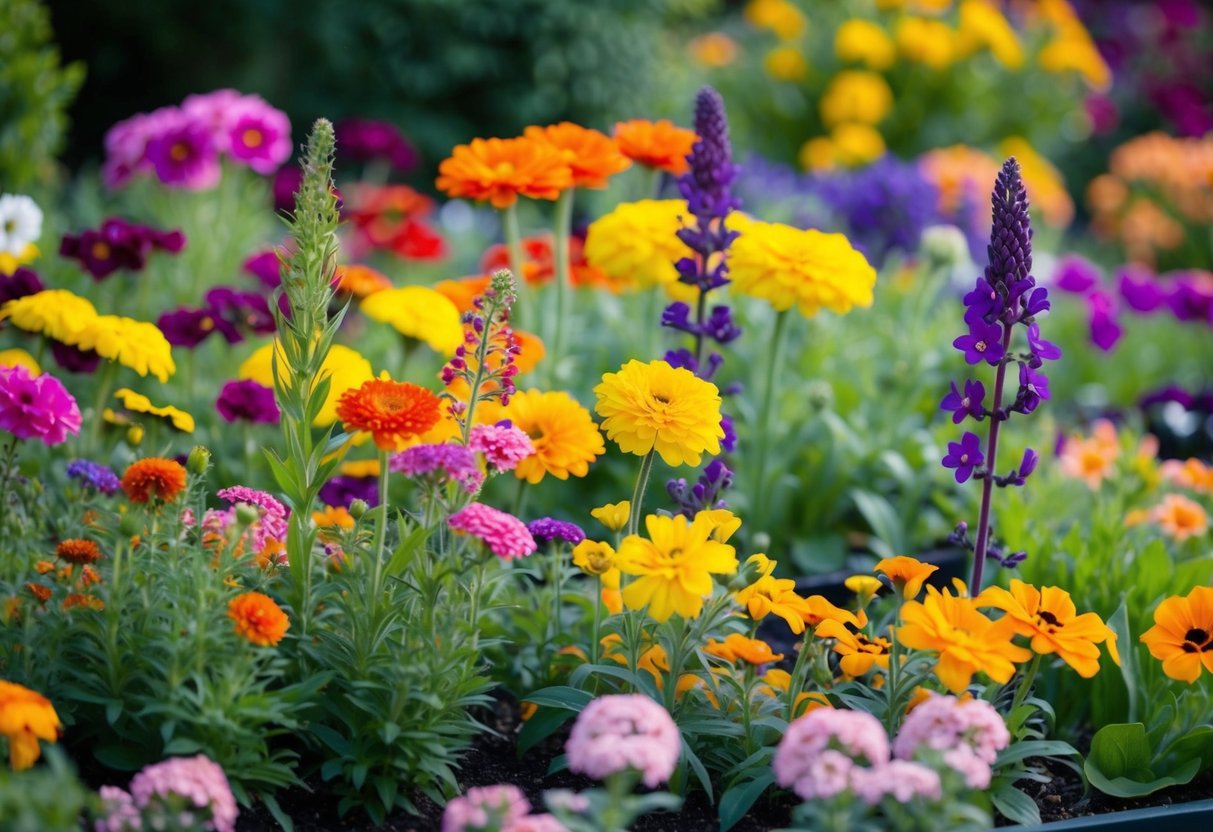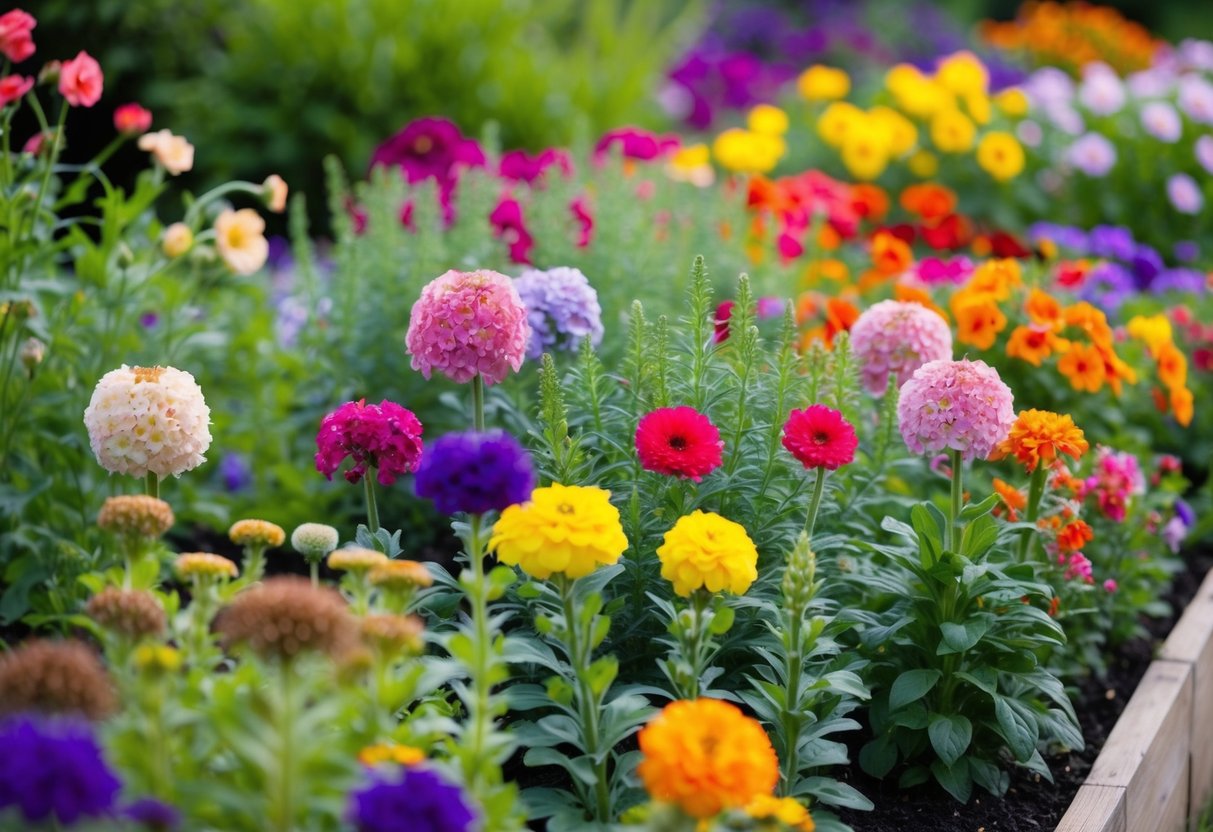Which Annuals Flower the Longest? Discover Top Picks
Gardening enthusiasts know the thrill of a colorful garden bursting with lush blooms all season long. If you’re wondering which flowers will give you that continuous splash of color, look no further. Some of the longest blooming annuals include zinnias, dahlias, and cosmos, which can flower from early summer until frost. These beauties are perfect for adding vibrant hues to your garden beds and containers.

Annuals like the ageratum and cupflower are also stunning choices. They offer a long blooming period with minimal maintenance, making them ideal for both beginner and seasoned gardeners. You’ll love how they effortlessly transform your garden into a lively and inviting space.
Imagine spending warm afternoons surrounded by these gorgeous flowers, as they dance in the breeze, creating a stunning display of color. With so many options available, choosing the right long-blooming annuals will make your garden a delightful retreat.
Understanding Annual Flowers

Annual flowers are plants that complete their life cycle in one year, offering colorful blooms throughout the season. Unlike perennials, which return year after year, annuals provide a burst of color and variety during their single season of life.
Difference Between Annuals and Perennials
Annuals and perennials differ mainly in their life cycle. Annual flowers grow, bloom, seed, and die within a single growing season. This cycle allows you to change up your garden every year with new colors and varieties. Examples of annuals include marigolds and petunias.
Perennials, on the other hand, live for more than two years. They go dormant in the cold months and return each spring. Tulips and hostas are common perennials, offering continuous blooms in their active seasons.
Choosing between annuals and perennials can depend on how much you enjoy changing your garden. If you like consistency, perennials may be your choice.
Benefits of Growing Annuals
One key benefit of growing annuals is the vibrant, colorful blooms they provide all season long. You have the flexibility to experiment with different types each year, constantly refreshing your garden’s look.
Annuals are also great for filling spaces with quick color. They can be planted in flower beds, hanging baskets, or containers. Some, like the tuberous begonias, are noted for their bright blooms and easy care.
You can enjoy a diverse range of colors and shapes with annuals. They allow you to create unique garden designs tailored to each season. If you love gardening and experimenting with new plants, annuals offer endless possibilities.
Selecting the Right Annuals for Your Garden

Choosing the right annuals for your garden means considering factors like sunlight, climate, and soil type. You’ll also want to think about hardiness zones to ensure your flowers thrive all summer long.
Considering Sun Exposure and Climate
Understanding how much sunlight your garden gets is key. Full sun means at least 6 to 8 hours of direct sunlight a day. Some plants, like zinnias and marigolds, love the sun and thrive with that much light. If your garden is shadier, impatiens could be a better choice as they prefer cooler spots.
Climate is important, too. Knowing your hardiness zone can guide you in picking plants that can handle your area’s temperature range. Zones help determine which annuals will grow best during cold or warm periods. Always check a plant’s preferred zone to match it with your local climate.
Soil Preferences for Healthy Growth
The type of soil you have affects how well your plants grow. Most annuals prefer well-drained soil since waterlogged conditions can lead to root rot. You can improve drainage by mixing sand or small rocks into the earth.
Checking the soil’s pH is useful, too. Some plants may need slightly acidic or alkaline soil. You might find marigolds do well in both neutral and slightly acidic soils. Consider enriching your garden’s loam with compost to provide necessary nutrients for healthy blooms. Regular feeding and watering also support vibrant growth throughout the season.
Top Long-Blooming Annuals

When looking for garden flowers that provide color all season long, there are several standout choices. These vibrant annuals will brighten up any garden space while requiring minimal maintenance.
Zinnias and Marigolds
Zinnias are known for their bright, bold colors and long blooming times. They grow well in sunny spots and are low-maintenance, often blooming from early summer to the first frost. With a range of sizes and colors, zinnias can fit into nearly any garden design. Their ability to attract pollinators like butterflies adds more life to your garden.
Marigolds offer stunning colors in yellows and oranges. They can grow up to 6 feet tall and are known for their strong scent. This scent can help ward off pests, making them a popular choice for gardeners. Marigolds are easy to grow, as they thrive in various soil types and prefer full sun. These cheerful annuals can be an essential part of your garden.
Petunias and Snapdragons
Petunias provide an array of colors including pinks, reds, and purples. They have a long bloom time and can be used in containers, borders, or hanging baskets. Petunias prefer sunny areas and should be watered regularly for the best blooms. Their trailing varieties are great for cascading over containers, adding a vibrant touch to your outdoor space.
Snapdragons showcase unique, tubular flowers that can bring whimsical charm to your garden. They come in a variety of colors and heights, making them versatile for different garden styles. Snapdragons enjoy cooler weather and can continue blooming even in the fall. They do well in well-drained soil and require regular deadheading to promote continuous blooms.
Lantana and Begonias
Lantana is celebrated for its clusters of multicolored flowers, ranging from pinks and yellows to purples and reds. It’s a hardy choice that thrives in sunny, hot conditions and is drought-tolerant once established. Lantana’s matures into a bushy plant, perfect for filling larger spaces in your garden.
Begonias are favored for their lush, colorful blooms and ease of care. With varieties that can thrive in both sun and shade, begonias are versatile flowering plants. They are appreciated for their vibrant reds, oranges, and pinks. Easy to maintain, begonias can add a burst of color to gardens and containers alike.
Caring for Your Annuals

Taking care of annual flowers ensures they bloom beautifully all season. You will need to focus on watering, fertilizing, and deadheading. It’s also important to manage pests and prevent diseases to keep your garden healthy.
Watering, Fertilizing, and Deadheading
Annuals like marigolds and impatiens often need regular watering, especially in hot weather. Check the soil and water when it’s dry about an inch deep. Many annuals, such as cupflowers, thrive with a balance of consistent moisture without being waterlogged.
Fertilizing helps promote growth and blooming. A balanced liquid fertilizer every few weeks is ideal. Be careful not to over-fertilize, as it can damage plants.
Deadheading—removing spent flowers—encourages more blooms. Simply pinch off faded blooms to help your plants focus on new growth. This practice is essential for long-blooming varieties like zinnias and dahlias.
Pest Management and Disease Prevention
Keep an eye out for common pests like aphids and snails. Use natural remedies, such as insecticidal soap or introducing beneficial insects. Keep plants healthy to fend off pests.
For disease prevention, ensure good air circulation and avoid overhead watering, which can spread fungal diseases. Remove any diseased leaves or stems immediately to stop the spread.
Some drought-tolerant plants, like moss roses, are less susceptible to diseases due to their hardy nature. Select low-maintenance annuals when possible, as these types often require less pest and disease management.
Designing with Annuals

Bright and versatile, annuals are perfect for adding splashes of color to your garden. They are a great choice for creating continuous displays and suit containers, hanging baskets, and garden beds.
Creating a Continuous Color Display
To keep your garden full of color, select annuals with different blooming periods. Arrange them in layers, with taller plants at the back and shorter ones at the front. Filling in gaps between perennials or shrubs with annuals like zinnias or marigolds ensures color throughout the season.
Make use of flowers that adapt well to your climate. For example, petunias and cosmos thrive in sunny spots, while impatiens do well in the shade. You may also enjoy using annuals in flower arrangements, bringing the outdoors inside. Regular deadheading—a simple task of removing spent blooms—encourages more summer blooms and keeps your garden lively.
Annuals in Containers and Hanging Baskets
Containers and hanging baskets are ideal for showcasing annuals. Choose suitable plants for your containers, making sure to include varieties that spill over the edges like lobelia or sweet potato vine. These give a full and lush look.
Opt for plants like geraniums or dahlias that deliver bright blooms and tolerate the confined space of containers. You can even switch out plants as the season progresses to maintain visual interest.
Make sure your baskets and containers have good drainage. Water regularly, especially during hot weather, to ensure your plants stay healthy and vibrant. A well-arranged container garden can transform patios and balconies into a colorful oasis.







